Crazy Animal That Lives 10 Thousand Years Ago
Crazy Animal That Lives 10 Thousand Years Ago
/https://tf-cmsv2-smithsonianmag-media.s3.amazonaws.com/filer/evolution-survivors-croc-631.jpg)
When we think about the history of life on earth and the vast changes that have transpired over millions and millions of years—every bit single-celled organisms evolved into species equally disparate every bit redwood trees, dragonflies and humans—are wonderfully apparent. Only, among all that evolutionary alter, some organisms have little modified from their distant ancestors. Creatures such as sharks and crocodiles are often viewed as evolutionary sluggards or "living fossils." While the rest of nature was caught up in life's race, the coelacanth and duck-billed platypus sat things out.
This perception isn't quite right. Many species of these living fossils differ significantly from their prehistoric counterparts, and oft the apparently primitive creatures are the remaining representatives of lineages that were in one case more than varied and diverse. Still, many of these organisms look as if they vest to another era. Charles Darwin explained why in his famous volume On the Origin of Species: Natural selection may have vastly modified other branches in the tree of life over time, but, amongst organisms like the lungfish, the quirks and contingencies of their habitats and lifestyles remained so stable that in that location was petty evolutionary pressure level to modify. Past hazard, these lineages occupied an evolutionary sweet spot. The great Victorian naturalist Thomas Henry Huxley called these creatures "persistent types," but in that location is an fifty-fifty simpler name for them—survivors.
1. Crocodylians
Sentinel any documentary about crocodiles and you're almost certain to hear the line "They take gone unchanged since the fourth dimension of the dinosaurs." That isn't exactly true. While crocodylians as we know them today—the alligators, gharials and crocodiles that live at the water's edge—take been around for near 85 million years, they belong to a much more diverse and disparate group of creatures that goes back to the Triassic.
Crocodylians are the final living representatives of the crocodylomorpha, an even bigger grouping that originated over 205 million years ago. They shared the world with the dinosaurs and came in a startling array of forms. Some—like the 112-million-twelvemonth-erstwhile, approximately 40-foot-long giant Sarcosuchus—looked quite like to their modernistic cousins, but in that location were too formidable ocean-going predators such as Dakosaurus; small-scale forms with mammal-similar teeth such as Pakasuchus; crocs with tusks and extra armor such as Armadillosuchus; and lithe, land-habitation carnivores such as Sebecus. Modern crocs do look ancient, but they are just the remainders of an fifty-fifty older and stranger lineage.
2. Velvet worm
"Velvet worm" is something of a misnomer. Stretching a quarter of an inch to viii inches long, and flanked by rows of stubby legs along their smoothen bodies, these invertebrates aren't worms at all. They belong to their ain grouping, which is more closely related to arthropods, and these inhabitants of the woods undergrowth are part of a much, much older lineage that goes back to one of the greatest evolutionary explosions of all time.
In 1909, secretary of the Smithsonian Institution Charles Doolittle Walcott discovered the animate being of the Burgess Shale—exquisitely preserved creatures from a 505-million-year-sometime sea. Many of these animals were different annihilation seen before, and the truthful affinities of many of the weird creatures from these deposits are still beingness debated. Even so, at least i creature looked familiar. Aysheaia, an invertebrate named past Walcott in 1911, closely resembles velvet worms and may exist close to the grouping's ancestry. Fifty-fifty though this form lacks some of the specialties seen in modern velvet worms, such equally a unique nozzle system that squirts an instant web over casualty, the Cambrian creature shared the segmented, stubby-legged body plans with living forms. Frustratingly, the soft bodies of velvet worms don't fossilize very well so no one is entirely sure when they emerged onto state for the showtime time. Simply, if you know what to expect for, you can nevertheless detect them itch through the leaf litter of tropical forests from Australia to South America.
3. Cow sharks
Near living sharks, from nurse sharks to nifty whites, have v gill slits on a side. But there are four species of moo-cow sharks that have six or seven gills, a feature thought to be retained for millions of years from some of the earliest sharks. These deepwater, six- and seven-gill sharks are considered some of the almost archaic of all shark species.
The evolutionary story of sharks is primarily one of teeth. With the exception of rare fossils that preserve remnants of soft parts, teeth are ordinarily all that is preserved from cartilaginous shark bodies. An articulated specimen of the early on shark Doliodus problematicus pushes the shark's existence dorsum to at least 409 million years ago, and they are probably even older than that. The lineage to which today's six- and seven-gill sharks vest, however, is more recent. Based upon isolated, saw-bract fossil teeth, paleontologists think cow sharks accept existed for at to the lowest degree 175 1000000 years. These deepwater sharks are opportunistic feeders—taking any they can—and may have had a stable function equally a deep-bounding main cleanup crew, scavenging on the bodies of marine reptiles during the Mesozoic and shifting to marine mammals afterward the time of the dinosaurs. Nosotros know very piffling about the appearances of these ancient sharks, but their roughly bladed teeth hint that they accept been complete deep-sea feces feeders for millions of years.
4. Horsetails
Long-lived lineages of animals often get nigh of the attention, but there are some survivors among the plants, too. Horsetails must be some of the greatest. These archaic plants are oftentimes found growing in patches along streamsides and other moisture habitats. Place a dinosaur toy among them, and the prehistoric model will look quite at home.
The reason why horsetails are considered and so aboriginal comes from two lines of testify. Living horsetails are unique among plants in that they reproduce via spores rather than seeds. Other plants probable gave upwardly this method of reproducing millions and millions of years ago, but, old though it may be, the spore technique makes horsetails resilient and very difficult to remove from places where they are considered weeds. Horsetails as well take a very deep fossil record. Though they make up small parts of forests now, enormous horsetails once made up entire forests in the days earlier modernistic trees evolved. In fact, much of the globe'southward coal, which originates from 360- to 300-meg-year-erstwhile Carboniferous deposits, are the remnants of horsetails such as Calamites that could have grown to be over 100 anxiety tall.
5. Lice
Not all the not bad survivors are charismatic. Some of evolution'south greatest success stories are parasites, but few have stuck in there longer than lice.
Although louse fossils are rare, in 2004 paleontologists announced that they had found a 44-million-yr-old feather louse that was strikingly like to lice that alive on the plumage of waterbirds today. The record of lice probably goes back even further. Terminal yr, researchers used the few known louse fossils along with genetic comparisons between living lice to determine when major lice lineages evolved. Feather lice, in item, seem to have split from their hitchhiking relatives sometime between 115 and 130 million years ago—right when little mammals were scurrying through the Cretaceous undergrowth and feathered dinosaurs were flocking around on land. Since plumage lice evolved to feed on early birds and feather-covered, non-avian dinosaurs, they have had to change little to keep up with their hosts.
vi. Brachiopods
Selection up a brachiopod and you might think you're looking at an ordinary mollusk. A shell split into two halves, called valves, protects the invertebrate, but in the example of the brachiopod, these ii halves are diff in size. That'due south how they got their common name—the unequal proportions of the shells brand some of the creatures await like old oil lanterns, hence the name "lamp shells."
Whether found in gravel, fastened to kelp or clinging to the rock of a continental shelf, brachiopods are relatively rare today. There may be around 100 different genera now living, but over 5,000 are known from a fossil record spanning 530 1000000 years. By most 488 meg years agone, brachiopods had become the dominant shelled animals in the seas—they were so thick in some places that their shells compose nearly of the sediment other fossils are establish in—but that all inverse with the worst mass extinction of all time. This was the Permian mass extinction, which some paleontologists rightly call the "Great Dying" for its catastrophic effect on the planet's fauna. Though the exact triggers are however debated, about 251 meg years ago a huge amount of greenhouse gases were dumped into the temper, and the oceans became highly acidic. Brachiopods suffered, giving a foothold to the mollusk ancestors and cousins of modern clams and cockles. Brachiopods have hung on in whatever crevices they could attach to but never managed to regain their authority.
7. Ginkgo
Ginkgo trees aren't quite as archaic as horsetails, but a record of over 175 million years is zip to sneeze at. Today these trees are represented only by one species,Ginkgo biloba, only this tree with fan-shaped leaves had its heyday when ferns, cycads and Jurassic dinosaurs dominated the mural.
ModernGinkgo trees are not very dissimilar from those that herbivorous dinosaurs may have fed on. A recentPaleobiology study by Wesleyan University paleobotanist Dana Royer and colleagues plant thatGinkgo trees seem to practice best in disturbed habitats aslope streams and levees, a habitat preference that may have been their downfall. Scientists know from livingGinkgo trees that they grow slowly, start reproducing belatedly and are by and large reproductive slowpokes when compared to more recently evolved lineages of plants that live in the same places.Ginkgo trees may have simply been out-bred by other plants when suitable habitats opened upwards, but this makes it all the more remarkable that one species managed to survive to the present day.
8. Duck-billed platypus
The duck-billed platypus truly looks as if information technology belongs to some other era, if not some other planet. In fact, when 19th-century European naturalists first saw blimp specimens sent from Australia, some scholars idea the animals must be a joke. Simply evolution wasn't kidding—hither was a mammal with a duck-like snout and a tail similar a beaver and that laid eggs.
Monotremes, similar the platypus, are strange mammals. These archaic, egg-laying forms last shared a common antecedent with marsupial and placental mammals over 175 million years ago, and rare fossils from Commonwealth of australia indicate that at that place have been platypus-like forms since 110 million years agone. Though often reconstructed with a narrower-snout, the Belatedly CretaceousSteropodon was a close cousin of early on platypuses. A much closer relative to the modern platypus, known asObdurodon, has been found in more than recent rocks spanning about 25 to v million years agone. This brute is different from its living relative in retaining adult teeth and some particular skull characteristics, just the skull shape is strikingly like. Rather than being a new kind of creature that evolved after the dinosaurs, the duck-billed platypus is truly a more than archaic kind of mammal with roots that go far deeper than most other mammals on the planet.
9. Coelacanth
Coelacanths were supposed to exist dead. As far as early 20th-century paleontologists knew, these distant fishy cousins of ours—categorized as "lobe-finned" fish because of their fat fins supported by a series of bones like to those in our ain limbs—had gone extinct by the end of the Cretaceous, about 66 million years ago, forth with the mosasaurs, pterosaurs, ammonites and non-avian dinosaurs. Simply it in 1938 Marjorie Courtenay-Latimer, a curator at South Africa'due south East London Museum, recognized a very strange fish lying on a dock after getting a tip about something strange from the deep. As it would plough out, the fish was a living coelacanth—she might every bit well have found a livingTyrannosaurus.
Paleontologists have discovered fossil coelacanths younger than 65 million years old since 1938, just, since these were unknown when the fish was re-discovered off South Africa, the discovery of a living member of the group immediately catapulted the fish to fame. 2 species have since been recognized, and they are different than their prehistoric relatives—plenty to belong to a different genus,Latimeria—but they are nevertheless quite similar to their prehistoric cousins. Creatures recognizable as coelacanths go back to about 400 1000000 years ago, and these fleshy-finned fish were the evolutionary cousins of lungfish and our ain archaic forerunners—the very first vertebrates to walk on land were specialized lobe-finned fish related to the recently discoveredTiktaalik. Similar many other organisms on this list, though, living coelacanths are the last of a again widespread and varied lineage.
ten. Horseshoe crab
In that location is probably no beast that epitomizes the title of "survivor" than the horseshoe crab. With their shield-similar carapaces and long, spined tails, these arthropods look prehistoric. When masses of one species,Limulus polyphemus, besiege on Mid-Atlantic beaches in the warmth of early summer, information technology is difficult not to imagine the scene every bit something from the deep past.
Exactly when, where and how horseshoe crabs evolved remains a thing of ongoing investigation, just the group of arthropods they belong to is thought to have diverged from their arachnid cousins around 480 meg years ago. The basic horseshoe crab body plan has been effectually since and so, although not exactly in the class nosotros now know. The newly named, 425-million-year-onetimeDibasterium durgae looked roughly similar a horseshoe crab from the meridian, though if yous were to turn the arthropod over, you would have been greeted by a nest of double-branched legs used for both breathing and locomotion.
Over fourth dimension, other horseshoe crab species developed other odd adaptations. Creatures like the boomerang-shapedAustrolimilus and the double-push horseshoe crabLiomesaspis correspond the extremes in the group's variation, merely information technology is true that horseshoe venereal as we know them today have been around for a very long time—the 150 million year onetimeMesolimulus looks like information technology would fit right in on a Delaware beach. Horseshoe crabs have connected to change since then, of course. The modern Atlantic horseshoe crab is non establish in the fossil tape, and the specific group of horseshoe crabs to which it belongs only has a record of about xx million years. Still, the changes inside the group have been astonishingly slight when viewed against the big picture of development. Since the time of the horseshoe crab's origin, the world has seen several mass extinctions, the ascent and fall of the non-avian dinosaurs and shiftings of continents and climates and so drastic that the earth truly is a wildly dissimilar place. All the while the horseshoe venereal accept been there, crawling along the seafloor. May they will continue to do so for millions of years to come.
Crazy Animal That Lives 10 Thousand Years Ago
Source: https://www.smithsonianmag.com/science-nature/the-top-10-greatest-survivors-of-evolution-118143319/
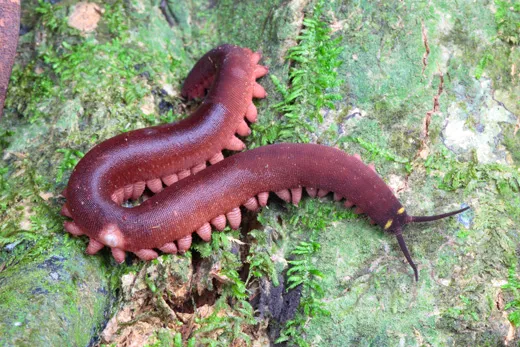
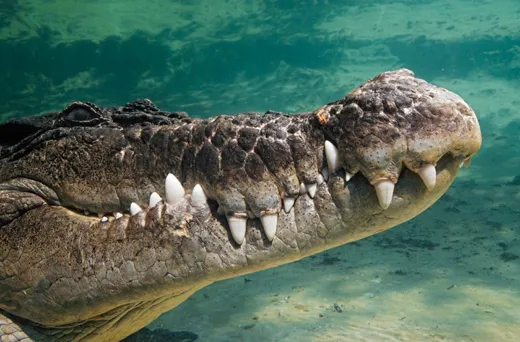
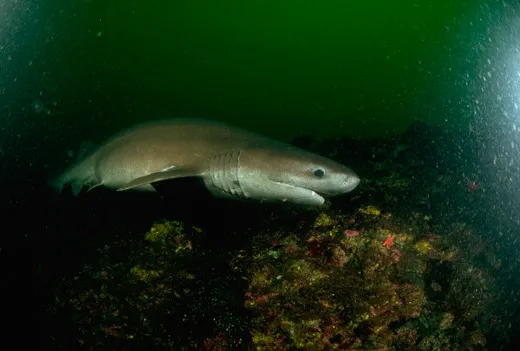
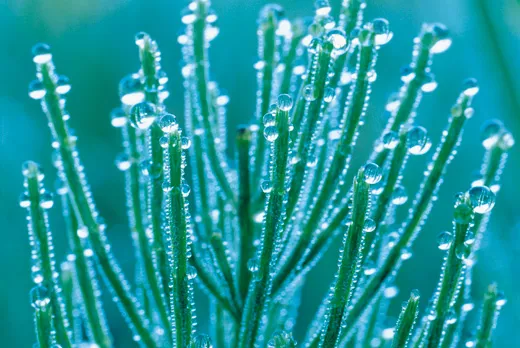
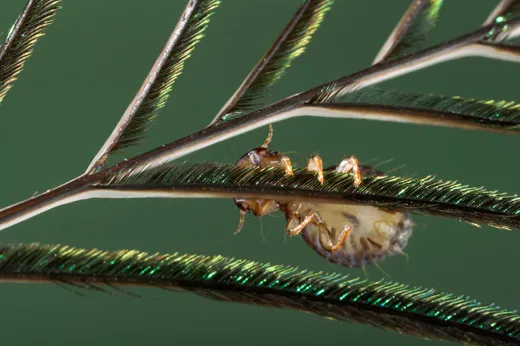
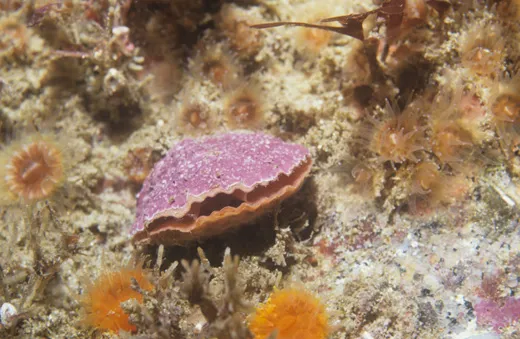
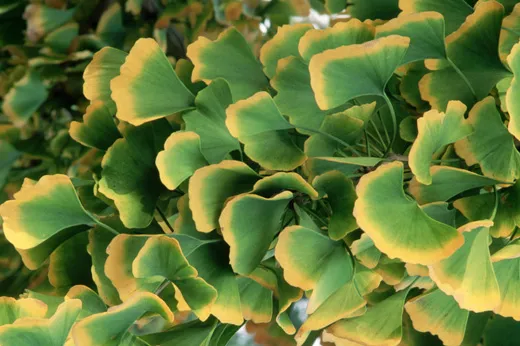
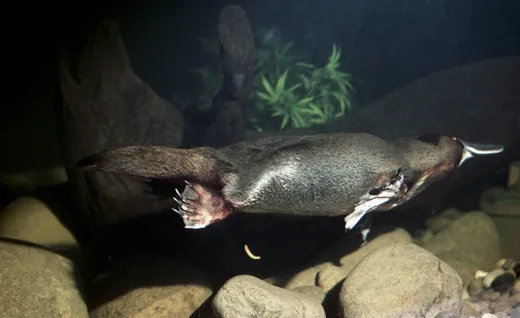
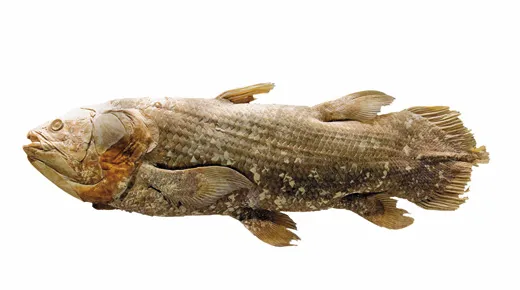
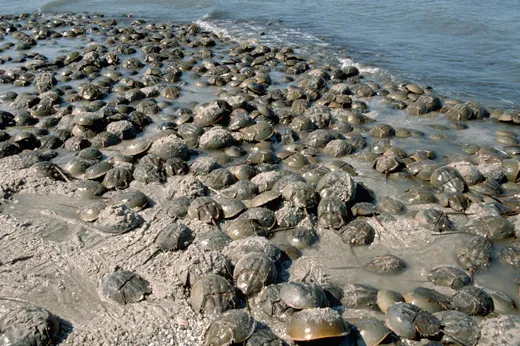



Comments
Post a Comment